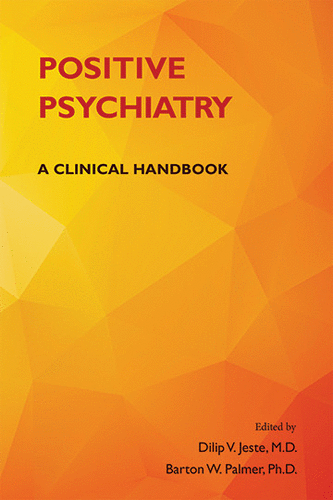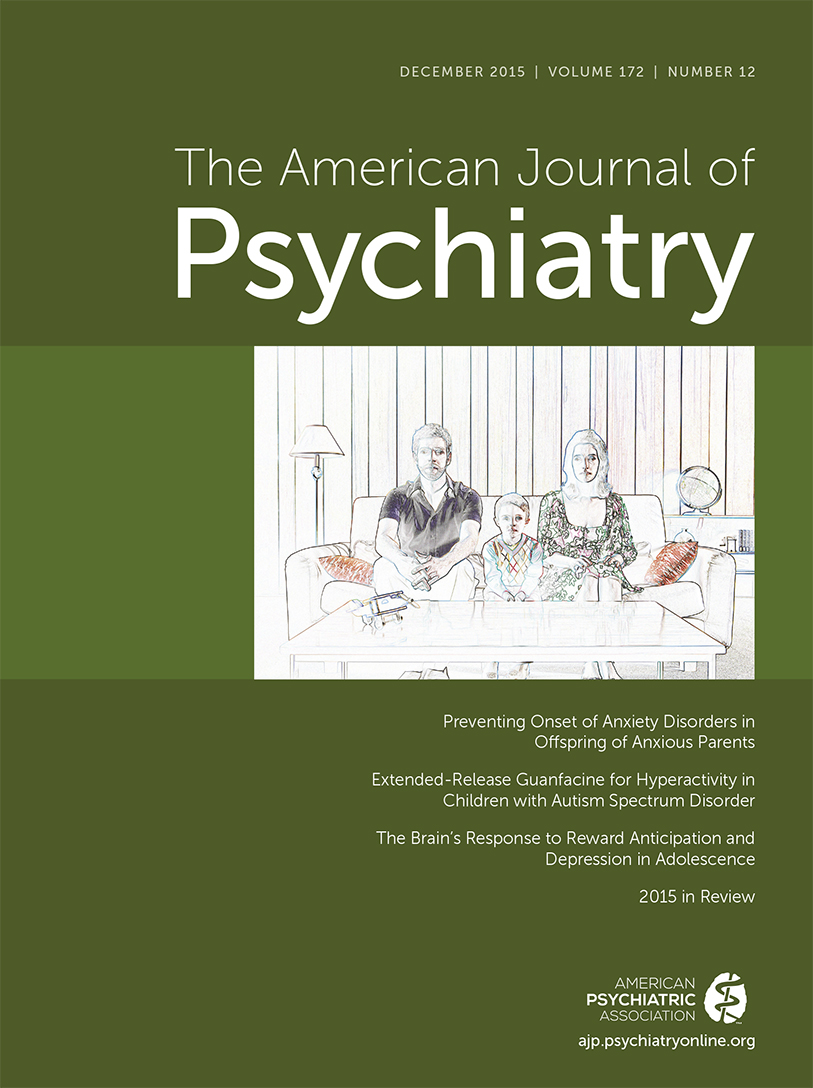Positive Psychiatry: A Clinical Handbook
Traditionally, medicine and psychiatry have been concerned with the treatment and prevention of illness and the reduction of suffering rather than the enhancement of life experience. However, the concept of positive mental health has been in the center of Western thinking since antiquity. Most thinkers in this area have been philosophers rather than physicians or psychiatrists who have been concerned with ethics. In antiquity, Plato thought that virtue (arete) is both necessary and sufficient for a “fulfilled life” (eudemonia) and that qualities such as self-control, courage, justice, piety, and wisdom are critical to living meaningfully. However, Plato suggested that these qualities are innate and took issue with Protagoras and the sophists of his time who advocated that virtue can be taught (in Plato’s Protagoras).

Positive Psychiatry: A Clinical Handbook, edited by Jeste and Palmer, introduces to our field a paradigm shift by extending psychiatry’s traditional focus on diagnosis and treatment of illness to enhancement of quality of life. Like Plato, positive psychiatry assumes that quality of life depends on psychosocial attitudes and skills. And like the sophists of antiquity, positive psychiatry is based on the view that psychosocial attitudes and skills can be developed and guided by appropriately trained professionals. Jeste and Palmer define positive psychiatry as “the science and practice of psychiatry that seeks to understand and promote well-being through assessments and interventions aimed at enhancing positive psychosocial factors” (pp. 2–3). As a branch of medicine, the target population of positive psychiatry is people with or at high risk of mental or physical disorders. Positive psychiatry “is not meant to replace the traditional model of psychiatry; rather, it is intended to complement and enrich ‘psychiatry as usual’, expanding its primary focus from pathology to health and from treating symptoms to enhancing well-being” (p. 3). Like William James’ presidential address to the American Philosophical Association in 1906, positive psychiatry suggests that positive emotions and beliefs can both augment the treatment of mental illness and enhance mental health.
Jeste and Palmer’s book brilliantly summarizes the current state of knowledge on positive psychiatry and, most importantly, provides clinical guidance on how to make positive psychiatry part of patient care. The book starts with a forward by Martin E.P. Seligman, who made positive psychology the legacy of his term as the president of the American Psychological Association in 1998. Positive emotion, engagement, good relationships, meaning, and accomplishments are the pillars of positive psychology proposed by Seligman. Jeste and Palmer recognize the influence of positive psychology. Although inspired by positive psychology, positive psychiatry focuses on patients rather than the healthy population and aims to uncover the neurobiological substrates of positive psychosocial factors with the goal of developing not only psychosocial but also biologically based interventions. The book includes authoritative chapters by eminent investigators and clinicians describing the state of the field on positive psychosocial factors, positive outcomes, and interventions in positive psychiatry. Each chapter outlines current safe and reliable empirical knowledge in its specific area, discusses clinical applications in considerable detail, and ends with home points relevant to clinical practice. Clinical vignettes throughout the book make the theoretical and clinical points of its chapters come alive.
A remarkable accomplishment of the book is the integration with and enhancement of many areas of general psychiatry. As an example, the chapter on Biology of Positive Psychiatry offers a critical review of studies on neural networks related to empathy, compassion, resilience, optimism, and creativity and on hereditability and candidate genetic markers. It argues that strengthening neural connections among certain brain structures can improve empathy and resilience and that suppressing neural connections among other structures may improve creativity. These findings provide targets for functional magnetic resonance imaging neurofeedback, neuromodulation, and behavioral interventions (e.g., computerized cognitive remediation, mindfulness meditation, and cognitive reappraisal); pharmacological interventions; or a combination (oxytocin during compassion training) that may improve positive psychological traits. The chapter on Positivity in Supportive and Psychodynamic Therapy summarizes empirical data indicating that specific techniques for enhancing positivity have been the basis of effective supportive psychotherapy. Similarly, emphasis on positive affect may enhance therapeutic alliance formation, strengths development, and the working-through process of dynamic psychotherapy. The chapter on Recovery in Mental Illness offers a comprehensive, clinical treatise of the recovery model and discusses comprehensive services and resources aimed at increasing the capacity of mentally ill persons to live a meaningful and satisfying life.
Positive Psychiatry will broaden the perspective of psychiatrists and other health professionals and stimulate the thinking of lay readers concerned about mental health and mental illness. The book is also a call for expanding our research agenda to the neurobiology of positive psychosocial qualities and the goals of clinical care to the promotion of fulfilled living. In this sense, the movement of positive psychiatry is consistent with Aristotle’s view that the pursuit of eudemonia depends on action.



